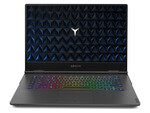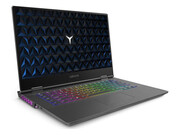Lenovo Legion Y740-15CHg-81HE0041GE
Specifications

Price comparison
Average of 1 scores (from 2 reviews)
Reviews for the Lenovo Legion Y740-15CHg-81HE0041GE
Source: Techaeris
 Archive.org version
Archive.org versionWhile most powerhouse gaming laptops look the part, it’s nice that the Lenovo Legion Y740 doesn’t and not only for design, but also performance, this is currently one of my favourite gaming laptops. It’s not perfect, but it is where it counts so if you don’t care about battery life or plan on using the camera for streaming, this laptop is an absolute beast while remaining on the sleeker side in the looks department. Take those out and you’re looking at a 9.5/10 instead of the overall 8.8 it received taking those into account.
Single Review, online available, Medium, Date: 07/10/2019
Rating: Total score: 88% price: 95% performance: 100% display: 100% mobility: 50% workmanship: 95%
Source: Good Gear Guide
 Archive.org version
Archive.org versionThe Lenovo Legion Y740 feels emblematic of this GPU generation changeover. Nvidia’s pushing ray tracing, but the content’s not really there to make good on it yet, and it leaves cards like the RTX 2070 Max-Q in a strange spot. Sure, the RTX generation is theoretically better, but only in specific instances. Ray tracing is years away from mattering much to the average user. In traditional benchmarks, the RTX 2070 Max-Q is about on a par with its predecessor—or worse, if you compare the RTX 2070’s Max-Q version to a full-size GTX 1070.
Single Review, online available, Very Long, Date: 05/03/2019
Comment
Model: The Lenovo Legion Y740 makes its debut into the industry as one of the high-performance gaming laptops to date. Do not let the rainbow-colored keyboard distract or dissuade you from making a calculated decision – this seemingly mundane-looking laptop operates using the 9th generation Intel Core processor. The incorporation of this processor reflects upon the laptop’s prime design to handle pro-level and heavy-duty tasks which are commonly linked to Triple-A games that demand high-end specifications in order to run properly. On top of that, the Lenovo Legion Y740 is also boosted with additional horsepower for masterful gameplay experience through the combination of a 4.5 GHz Turbo, 6 cores, and 12 threads. Gamers can now refrain from dreading on a fear of missing out on the latest game launches just because their laptop could not support the graphics and system requirements. To capitalize on delivering an elite and immersive gaming experience, the Lenovo Legion Y740 is armed with the one-of-a-kind NVIDIA GeForce RTX 20 series graphics card. The Max-Q variant of this graphics card is optimized for efficiency, boasts a high-cooling method, and a 40 dB limit to suppress the noises generated by the cooling fans. These added competencies make certain that the Lenovo Legion Y740 can sustain long hours of gaming and prevent it from succumbing to forced shutdown due to overheating or data-processing failure. On top of that, the GeForce RTX 20 series graphics card is also powered by the ground-breaking NVIDIA Turing GPU architecture, which is bound to ramp up its audience’s gaming experience to a whole new level. This architecture is the first GPU in history to be capable of real-time ray tracing, which renders in-game graphics into a surreal degree of lifelike realism.
With a 15.6-inch display stretching almost to the curved edges of the screen, game graphics are not only to be rendered by high-spec processors and graphic cards. The Lenovo Legion Y740 provides optional configurations to elevate its clientele’s gaming experience by offering the Nvidia G-SYNC technology and an impressive Dolby Vision High Dynamic Range (HDR) format. You would think that the gaming experience entailing the Legion Y740 could not achieve a higher tier than it already does. The rainbow back lights on the keys of the keyboard are not merely for aesthetic purpose. The colorful hues accentuate the Lenovo Legion Y740 keyboard’s capabilities for being one of the most responsive in-game controls for users to play around with. Users can take advantage of its 100 % anti-ghosting feature, bask in its Corsair iCUE RGB lighting, and tweak further upon a range of customizations to tailor the aptitude of the keyboard to one’s play style and comfort.
Hands-on article by Jagadisa Rajarathnam
NVIDIA GeForce RTX 2070 Max-Q: High-End laptop graphics card based on the TU106 chip with 2,304 shaders and 8 GB GDDR6 VRAM. Offers reduced clock speeds to achieve a much lower power consumption.
With these GPUs you are able to play modern and demanding games fluently at medium detail settings and HD resolution.
» Further information can be found in our Comparison of Mobile Graphics Cards and the corresponding Benchmark List.
i7-8750H: On Coffee Lake architecture based processor for big and heavy laptops. Integrates six processor cores clocked at 2.2 - 4.1 GHz (4 GHz with 4 cores, 3.9 GHz with 6 cores) that support HyperThreading. Manufactured in an improved 14nm process (14nm++). » Further information can be found in our Comparison of Mobile Processsors.




